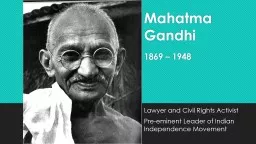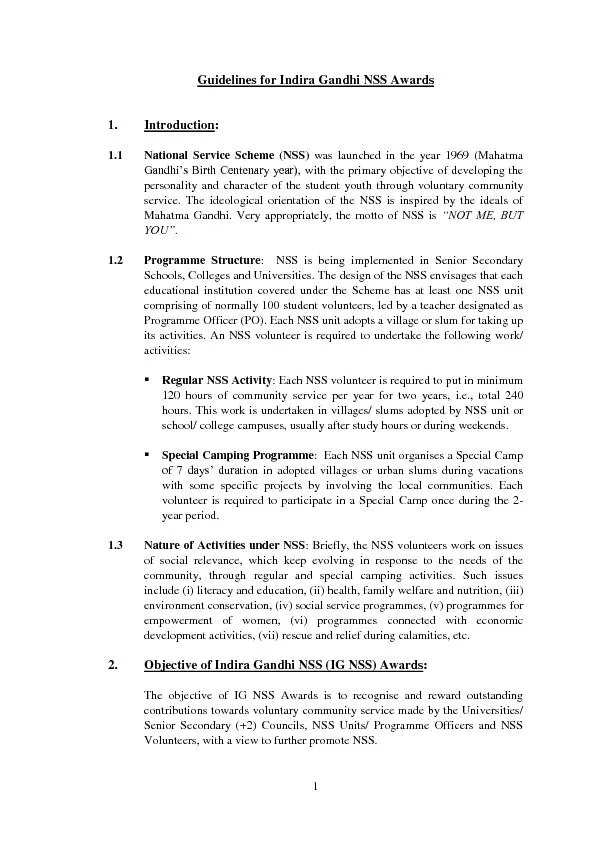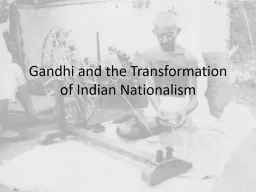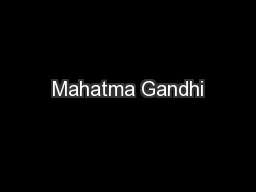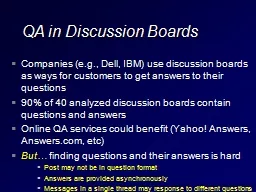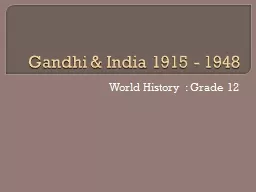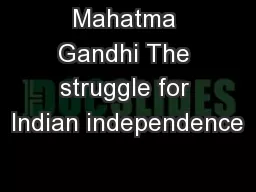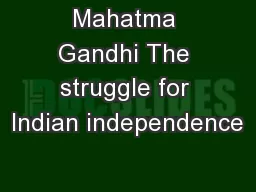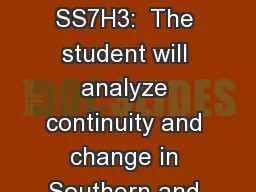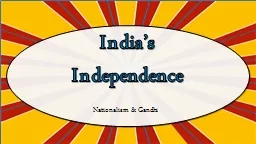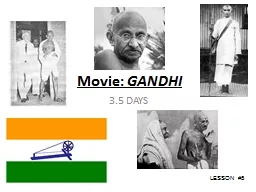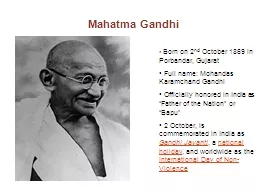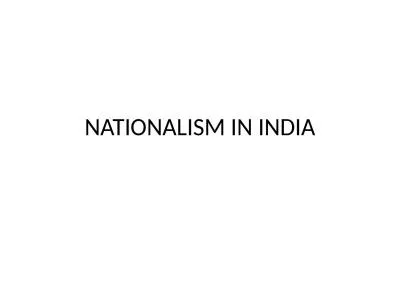PPT-Mahatma Gandhi
Author : tawny-fly | Published Date : 2016-05-09
Lawyer and Civil Rights Activist 1869 1948 Preeminent Leader of Indian Independence Movement Gandhis Understanding of Conflict Feelings of injustice or deprivation
Presentation Embed Code
Download Presentation
Download Presentation The PPT/PDF document "Mahatma Gandhi" is the property of its rightful owner. Permission is granted to download and print the materials on this website for personal, non-commercial use only, and to display it on your personal computer provided you do not modify the materials and that you retain all copyright notices contained in the materials. By downloading content from our website, you accept the terms of this agreement.
Mahatma Gandhi: Transcript
Download Rules Of Document
"Mahatma Gandhi"The content belongs to its owner. You may download and print it for personal use, without modification, and keep all copyright notices. By downloading, you agree to these terms.
Related Documents

